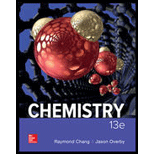
Concept explainers
a)
Interpretation:
The formation of given compound from 3-methyl-1-butyne has to be shown.
Concept introduction:
Addition reaction:
Markovnikov’s rule:
In the overall addition reaction, the hydrogen atom (electrophile) is bonded to least substituted carbon and nucleophile is bonded to the most substituted carbon. This is known as Markovnikov’s rule.

b)
Interpretation:
The formation of given compound from 3-methyl-1-butyne has to be shown.
Concept introduction:
Addition reaction: Alkene reacts with polar reagent (HBr, HCl) across the double bond, leads to the product of alkyl halide.
Addition of bromine across the double bond in the presence of Lewis catalyst undergoes addition reaction leads to formation of products.
Markovnikov’s rule:
In the overall reaction, the hydrogen atom (electrophile) is bonded to least substituted carbon and nucleophile is bonded to the most substituted carbon. This is known as Markovnikov’s rule.

c)
Interpretation:
The formation of given compound from 3-methyl-1-butyne has to be shown.
Concept introduction:
Addition reaction: Alkene reacts with polar reagent (HBr, HCl) across the double bond, leads to the product of alkyl halide (Or)
Hydrogenation of alkene: Addition of hydrogen molecule across the double bond in presence of catalyst undergoes hydrogenation of alkene.
Markovnikov’s rule:
In the overall reaction, the hydrogen atom (electrophile) is bonded to least substituted carbon and nucleophile is bonded to the most substituted carbon. This is known as Markovnikov’s rule.

Want to see the full answer?
Check out a sample textbook solution
Chapter 24 Solutions
Chemistry
- Show how to convert ethyl benzene to (a) 2,5-dichlorobenzoic acid and (b) 2,4-dichlorobenzoic acid.arrow_forwardno aiarrow_forwardPolymers may be composed of thousands of monomers. Draw three repeat units (trimer) of the polymer formed in this reaction. Assume there are hydrogen atoms there are hydrogen atoms on the two ends of the trimer. Ignore inorganic byproducts.arrow_forward
- 8:44 PM Sun Apr 13 Earn Freecash.com O Measurement and Matter =1 Setting up a unit conversion 110 Eddie says... ✰ www-awu.aleks.com A student sets up the following equation to convert a measurement. (The ? stands for a number the student is going to calculate.) Fill in the missing part of this equation. Note: your answer should be in the form of one or more fractions multiplied together. (- 4 J kJ -7.0 × 10 ☐ = ? mmol.°C mol °C x10 μ Explanation Check □·□ torox.io Grey Hill LLC. All Rightsarrow_forwardPolymers may be composed of thousands of monomers. Draw three repeat units (trimer) of the polymer formed in this reaction. Assume there are hydrogen atoms there are hydrogen atoms on the two ends of the trimer. Ignore inorganic byproducts please.arrow_forwardi need help with the folarrow_forward
 Chemistry: Principles and ReactionsChemistryISBN:9781305079373Author:William L. Masterton, Cecile N. HurleyPublisher:Cengage Learning
Chemistry: Principles and ReactionsChemistryISBN:9781305079373Author:William L. Masterton, Cecile N. HurleyPublisher:Cengage Learning
